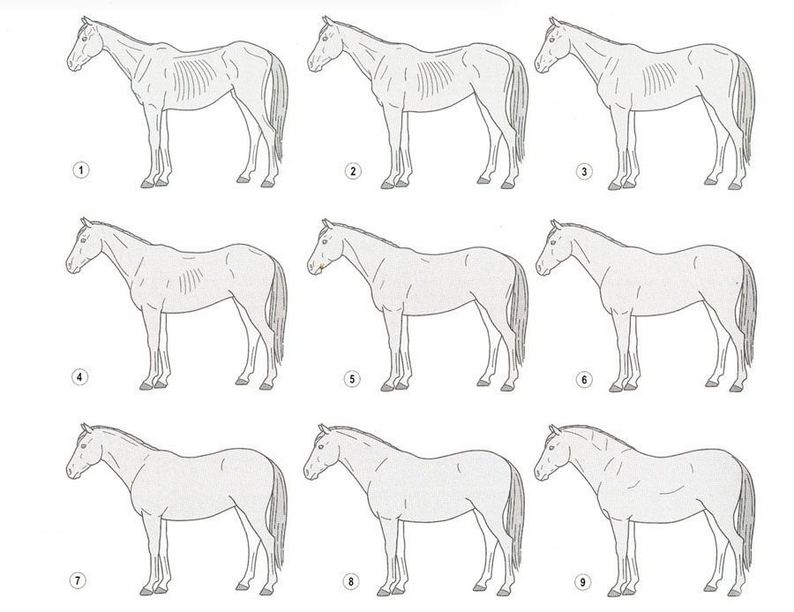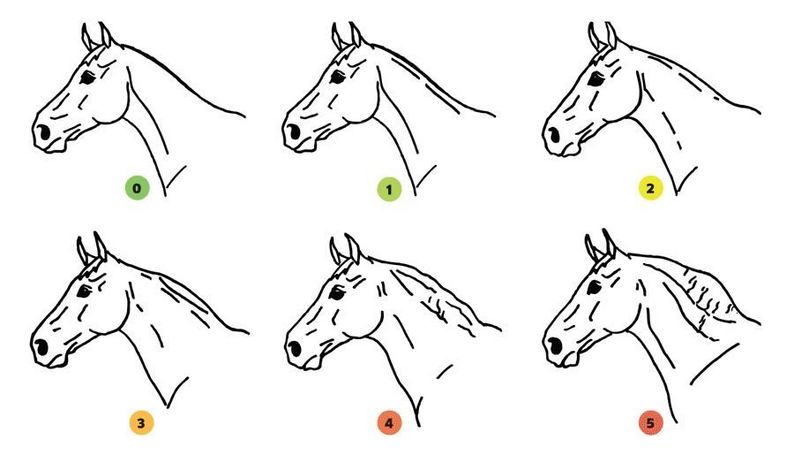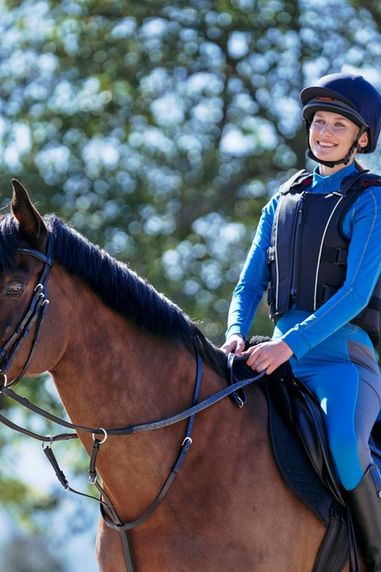
Weight Vs Body Scoring
Maintaining your horse's health and well being all starts with good nutrition! As equestrians the first thing we think about when feeding our horses is often their weight. However, it’s important for us to remember that weight is just one of the many indicators of overall health.
Body Scoring Your Horse
First thing's first, what is body scoring? Essentially, body scoring is a practical method of assessing the amount of fat and muscle covering your horses body. This gives you an idea of their general health and dietary requirements, without overly focusing on weight. While knowing your horses weight can be really helpful in determining the amounts of feed your horse will require, no two horses are the same! As a result, there is no way to accurately determine the exact perfect weight. Assessing your horse and assigning a body score is a much more effective way to assess their overall physical status.
To evaluate the suitability of your horse's diet and effectively make alterations you should focus on three key areas;
1) Top Line Scoring
Top line assessment focuses on your horses overall muscle tone. As riders we’ve all herd the term top line, but what is it? Your horses ‘top line’ runs over the top of their neck, withers and back to the hip and stifle. While feeding alone does not build muscle, proper feeding ensures that your horses body has sufficient levels of amino acids from good quality protein to build muscle. Even with the best training, without good nutrition your horses muscle tone will be poor, as the essential building blocks aren't being provided. To assess your horses top line look for the following signs;
Excellent
- An ideal amount of muscle for their body type
- Smooth neck which blends into the shoulder and wither
- Full muscle coverage either side of their withers along the spinal column so the vertebrae cannot be seen.
- Defined stifle muscles.
An excellent top line score indicates that your horse is in the correct level of work and has optimum levels of protein in their diet.
Good
- Your horse has an adequate level of muscle although some areas could be improved.
- The neck has some muscle tone however there is some hollowing where it meets the shoulder.
- There is hollowing each side of the withers and along the back
- The hip to stifle area is flat.
A good top line score indicates that your horse is in a good level of work and has a sufficient level of protein in their diet.
Adequate
- The neck has some muscles but is weak and inadequate in areas.
- Each side of the wither is sunken.
- The back and loins are bony.
- The vertebrae are higher than the muscle either side.
- There is some muscles over the hip and hind quarters.
- The hip to stifle area is hollow and weak.
If your horse is in a good level of work this may suggest that you may not be meeting your horses minimum protein requirements.
Poor
- The neck, withers and back are concave and hollow.
- The hip bones, vertebrae, and croup are pointed and the muscles are sunken.
- The width of the stifle is narrower than that of the hip.
2) Body Condition Scoring
While top line assessment focuses on your horses muscle tone, your horse's body condition score looks at the overall level of fat. This will help you to determine if your horse is having too many or too few calories.

1) Poor
Bone structures are easily noticeable and protruding.
2) Very Thin
Bone structure is faintly visible with a very slight fat covering over the top line.
3) Thin
Features are accentuated with a slight covering of fat over the ribs and top line.
4) Moderately Thin
The horse is not obvious thin and some fat is present across the body.
5) Moderate
The neck blends smoothly into the withers. The shoulder blends smoothly into the back. The ribs can be felt but not seen. The back is level.
6) Moderately Fat
Fat is beginning to cover neck withers shoulder and back. The ribs feel spongy. There is a slight grove down the back.
7) Fleshy
Fat covers the neck, withers and shoulder. Ribs can be felt with pressure. There is a grove down the back.
8) Fat
The neck is noticeably thick and fat pockets have formed in the neck and behind the shoulder. The ribs are difficult to feel. There is a distinct grove down the back.
9) Extremely Fat
There is bulging fat along the neck, shoulder, wither and ribs. There is a distinct grove down the back.
Horses with a condition score of 4 or below are likely receiving too few calories . Horses with a condition score of 6 or above are likely receiving too many calories.
How To Body Score
Neck
Withers
Shoulder
Ribs
Loins
Tail
3) Cresty Neck Scoring
As many pony owners will be aware excess fat across your horses neck is believed to be linked with and indicative of an increased risk of issues such EMS and Laminitis. When evaluating the horses neck it's important to objectively assess the amount of fat and muscle.

0) The horse has no visible crest and fatty deposits can not be felt.
1) There is no visible crest however some fat can be felt.
2) A small, soft crest can be seen but is even from poll to wither. The crest is easily movable and can be cupped in one hand
3) The crest is firm, thick and uneven with heavy fat build up in the centre. The crest can be cupped in one hand but is not easily moved.
4) The crest is large and fat pockets can be seen. The crest can not be cupped in one hand and is not easily moved.
5) The crest is large and the weight causes it to droop to one side.
As a general rule this scoring system applies to horses with a body condition score of 5 or above.
Weighing Your Horse
There are two main ways in which you can determine the weight of your horse, a weigh tape or a weigh bridge.
Weigh Bridge - Much like a bathroom scale, a weigh bridge will give a digital reading of your horses weight. To access a weigh bridge you can contact a feed manufacturer or your vet.
Weigh Tape - A weigh tape is used to take a measurement from your horse giving a rough estimate of their weight. Weigh tapes should not be used as an exact representation but are a great tool for monitoring change.
We hope that you have found this blog helpful. If you have any further questions about please contact our customer service team.





